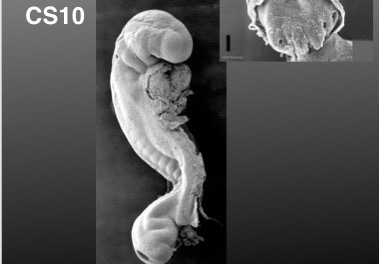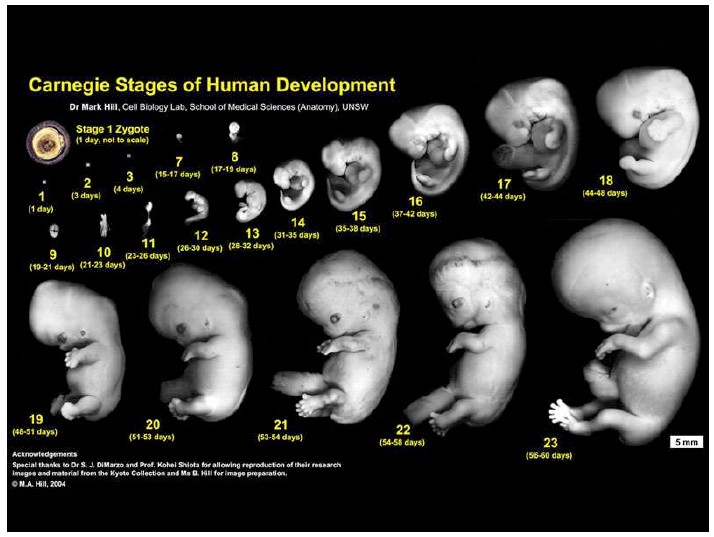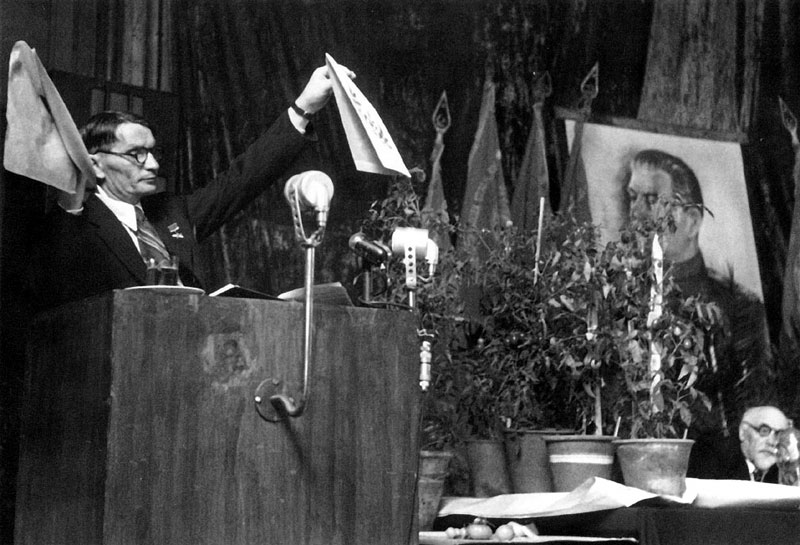III. Models of human development Pluripotent stem cells (PSCs: ESCs and iPSCs) create opportunities to address the ethical and technical constraints associated with the use of human embryos. In order to discuss and evaluate these opportunities it is important first to provide a context for this work and look at its roots and assess its limitations. These days one has the impression that Embryonic Stem Cells (ESCs) are collections of genes, of epigenetic modifications all revealed by barcodes and sophisticated genomic technologies but, actually they are cells and their surname is embryonic, and cells are the units of the embryo, […]
Continue readingCategory: History of Science
Notes on Human Embryos
II. The 14-day rule and its implications The 14-day rule is an important landmark in the study of the development of human embryos. Established as part of the conclusions of the Warnock committee of Inquiry into Human Fertilisation and Embryology (1), later enshrined into British law by an act of Parliament in 1990, it demarcates a line that cannot be crossed when growing human embryos ex vivo and has served as the reference for work with human embryos since. At the time, 1984, the ability to culture fertilized human eggs ex vivo did not go beyond three or four days, […]
Continue readingNotes on Human Embryos
I. What we know and what it can tell us about ourselves Embryos are, or should be, familiar entities to people reading this blog, most likely biologists or scientists with an interest in Biology; but don’t take this knowledge for granted. Ask around what is an embryo and you will find difficulty in expressing an answer: a baby, a foetus, something small inside the womb of a pregnant woman, something to do with In Vitro Fertilization (IVF) are some answers I encountered when doing the exercise. “Embryo” is a word behind an entity which remains a big unknown. In the […]
Continue readingThinking About Science in Trump’s USA: A Warning from History
The old Chinese curse, “may you live in interesting times”, has been thrust upon us; interesting times, indeed. Well, more than interesting, surreal. Brexit and Trump are just what is closest to us but let us not forget the puzzling situation in Syria and the mystery that Russia always is (the famous adage of Churchill about the Soviet Union always comes to mind: “a riddle wrapped in a mystery inside an enigma”). One of the most surprising features of these times is the disregard for logic and sense, the creeping influence of “the falsehood” and a plump disregard for objective, […]
Continue readingA Short Tale about Brachyury
Once upon time….somebody said that Genetics is Ariadne’s thread of Biology, the only way to guide us out of the labyrinth that is a biological problem. Nowhere has this been more true than in the analysis of development, the processes underlying the emergence of an organism. In this spirit, it is the systematic application of genetic analysis to Drosophila melanogaster and Caenorhabditis elegans spearheaded a deluge of information that started modern ‘Developmental Biology’ (the study of the dynamics of pattern and form in embryos, as opposed to ‘Embryology’, the detailed description of the different stages associated with embryos). The success […]
Continue readingIt’s the Magnesium!
How times change! In an episode of the making of molecular biology, Sydney Brenner was lying on a beach in California thinking about why the experiments he had been doing were not working. He had gone to California with F. Jacob to try to isolate messenger RNA, an elusive entity at the time which genetics and theory had predicted should be there. The days were passing by and mRNA kept on escaping their clutches. In the recollection of Jacob in his autobiography (The Statue Within): “That is why, thanks to the solicitude of the biochemist Hildegaard, we found ourselves lying […]
Continue readingExpensive or Insightful Biology?: Single Cell Analysis as a Symptom
Lists, catalogues and classifications have always been the business of the biological sciences. The nature cabinets of the XVII and XVIII centuries, the collections that occupied much of the XIX century and which fuelled the work of Darwin are good examples of this. Beetles, butterflies, fish, pigeons, plants occupied (and occupy) the time of individuals, often amateurs, interested in Nature. The nature of this enterprise is captured in Umberto Eco’s book “The Infinity of Lists†When we don’t know the boundaries of what we want to portray, when we don’t know how many things we are talking about (….) when […]
Continue readingThe case of the Irish Elk, a parable for the weight of the glamour journals
The case of the Irish Elk, a parable for the weight of the glamour journals In one of his wonderful and educational essays, SJ Gould discusses the story of the Irish Elk, a spectacular species of elk that became extinct because……well, it is unclear why but the late specimens did have a very visible trait: enormous –and I mean enormous- antlers; the elk was over 3 meters tall and had antlers 3.3 m across. There have been many theories to explain the mysterious extinction of this magnificent animal but the one Gould discusses and the one I like to think […]
Continue readingGood bye to a hut and to all that
“On a summer day in the late fifties a delegation from the Soviet Union appeared in Cambridge demanding to see the “Institute of Molecular Biology”. When I took them to our shabby prefabricated hut in front of the University Physics Department, called Cavendish Laboratory after its nineteenth century benefactor, they went into a huddle until finally one of them asked me: “And where do you work in winter?” They wanted to know how I had planned our successful Research Unit, imagining that I had recruited an interdisciplinary team as Noah had chosen the animals for his ark: two mathematicians, two […]
Continue readingBoltzmann, Darwin and THE current challenge of the life sciences
The XIX century will be called the century of Darwin (L. Boltzmann) While most people have heard of Einstein and Newton and Feynman, Boltzmann is not a household name when thinking about famous physicists. Ludwig Boltzmann was a theoretical physicist extraordinaire who at the end of the XIX century, in that Vienna that was going to give so much to the world in the ensuing years, taught us a most interesting way of thinking in material terms about the structure of matter and abstract concepts like heat and energy. Spurred by his philosophical inclinations, in his latter years he wanted […]
Continue reading





